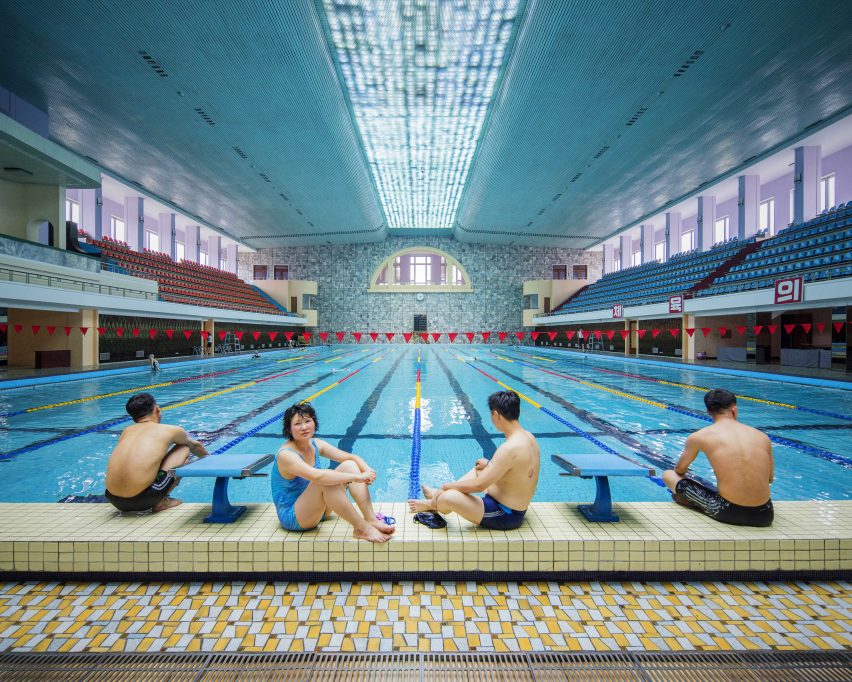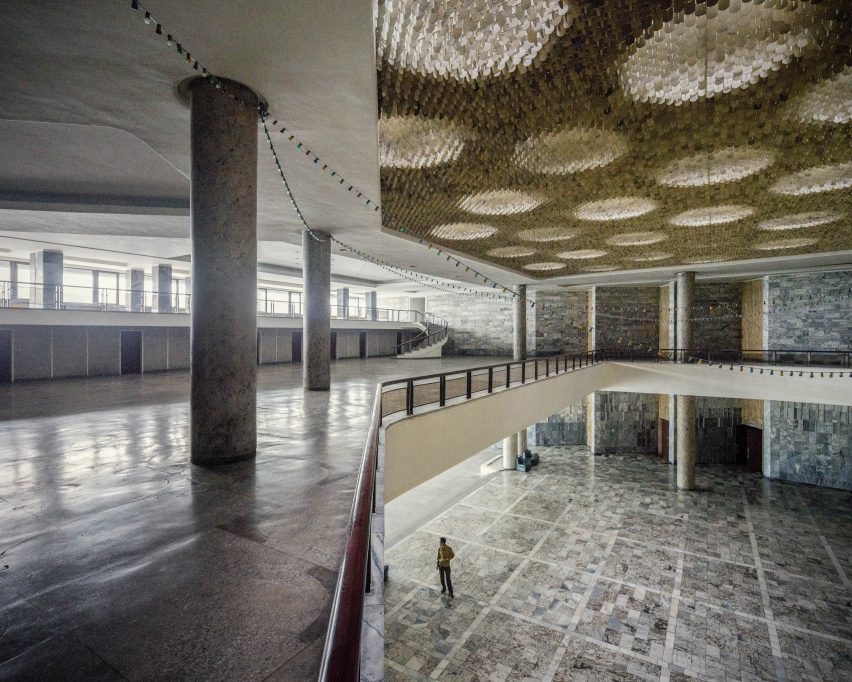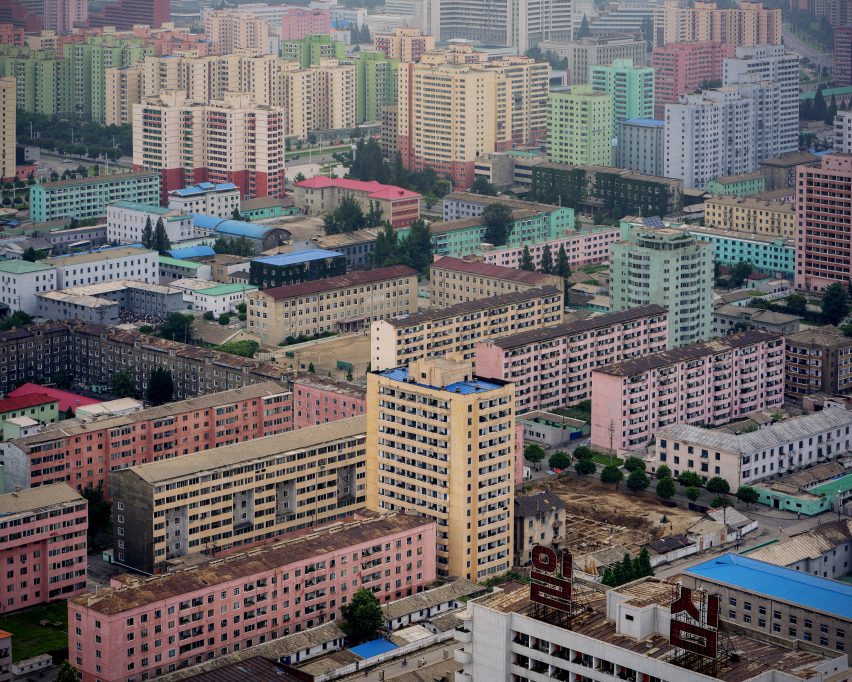Raphael Olivier's photographs of North Korea reveal Pyongyang's unique architecture
Photo essay: now that North Korea is no longer the tourism black spot it once was, French photographer Raphael Olivier has travelled to the notoriously secretive nation's capital to capture its particular architectural style (+ slideshow).
Left fascinated by Pyongyang after a one-day trip from China, Olivier returned to the city last month to spend more time documenting its buildings and monuments.
Their style is based on austere Soviet architecture, as the USSR helped rebuilding work after the Korean War.
However, years of being cut off from much of the rest of world has led to a unique style that blends Stalinist scale with quirks taken from Korean culture.
Olivier aimed to show this in his images, and talks about his trip and process in this exclusive essay for Dezeen:
I travelled to North Korea for the first time in May 2015 at the occasion of the Pyongyang Marathon, on a very short 24-hour express tour of the city as there was a great promo deal from Shanghai. This was a last-minute trip and really an eye-opener.
Of course I had heard and read about Pyongyang, even watched a few documentaries, but nothing could have prepared me for the overwhelming sensorial impact I experienced. It took me a while to process once I got back.

From that day my interest in the country was sparked, and I kept in mind to return for a longer stay, in order to better get my head around this fascinating environment.
Contrary to popular belief, it is not difficult to visit the DPRK – the country is open to tourism and several agencies organise specialised tours from Beijing. Nowadays you can go hiking, cycling, surfing and even ride a helicopter in North Korea.
The most notorious of these agencies is Koryo Tours, with 20 years' experience and great access to the country, so I decided to travel with them on a dedicated architecture tour of Pyongyang in July 2016.

Pyongyang was heavily bombed and almost completely destroyed during the Korean War (1950-1953), so the city had to rise back from its ashes during the 1960s and 1970s, helped by the Soviet Union.
Many local architects and urban planners were trained in the USSR, and together with Russian partners helped rebuild the city – with strong Stalinist influences marked by massive buildings, wide avenues, Modernist and Brutalist designs, all well laid-out in a cohesive urban plan sprinkled with vast public squares and green parks.
Then later, after the collapse of the Soviet Union, the country went on to develop a style of its own, still based on Socialist architecture principles but including local influences adapted to Korean culture and society.

The result is that today Pyongyang is an incredible showcase of beautifully preserved vintage Socialist architecture, untouched by the visual pollution of commercial advertising billboards, flashy retails or ugly office buildings.
The capital has managed to keep its very own identity, radiating a powerful energy of harshness, strength, resilience and pride, largely emphasised by the general monolithic use of raw concrete.
All of the images were shot digitally on my Sony A7R2 using mostly tilt-shift lenses, plus sometimes a few Zeiss fixed primes. The shooting process was to capture multiple frames, tilting the lenses up and down to cover a wider scene, then stitching the frames together in post-production.

This technique allows me to create larger final files close to medium-format resolution with a well-balanced ratio of four by five, which looks more pleasing than the traditional 24 by 36 output of most DSLR cameras in my opinion.
Shooting this way on a digital camera allowed me to combine a fast, snapshot-style of shooting while keeping tilt-shift capabilities, and still producing large images with good dynamic range and plenty of details throughout a variety of lighting conditions. This would not have been possible with any film cameras.
Today images of North Korea are not so rare anymore, yet this short visual essay aims to focus on the unique architectural features of Pyongyang with a different approach than what I have seen so far. Any photo essay is always a compromise, and this was my personal attempt to showcase one the most unknown and isolated cities in the world under certain specific given conditions.